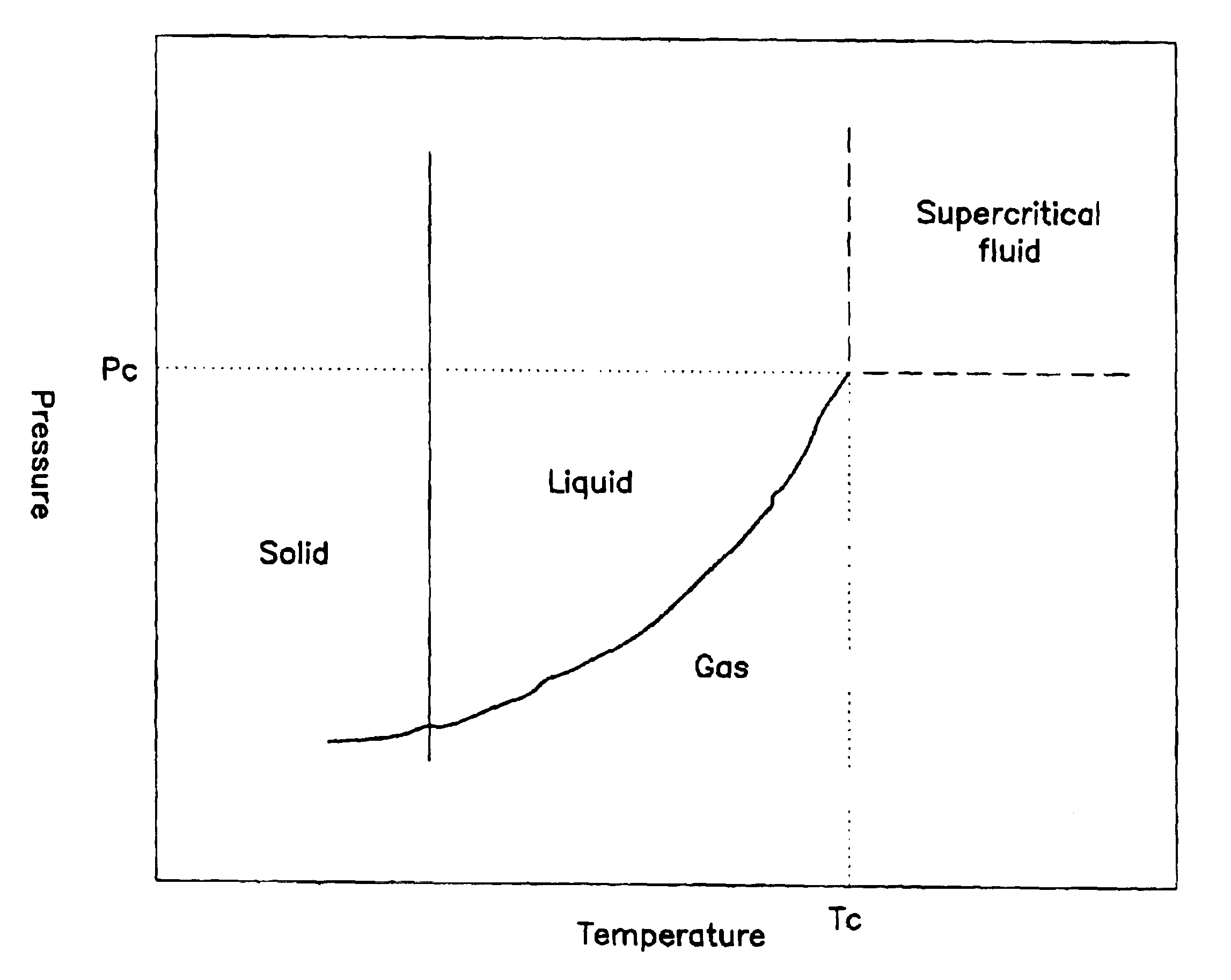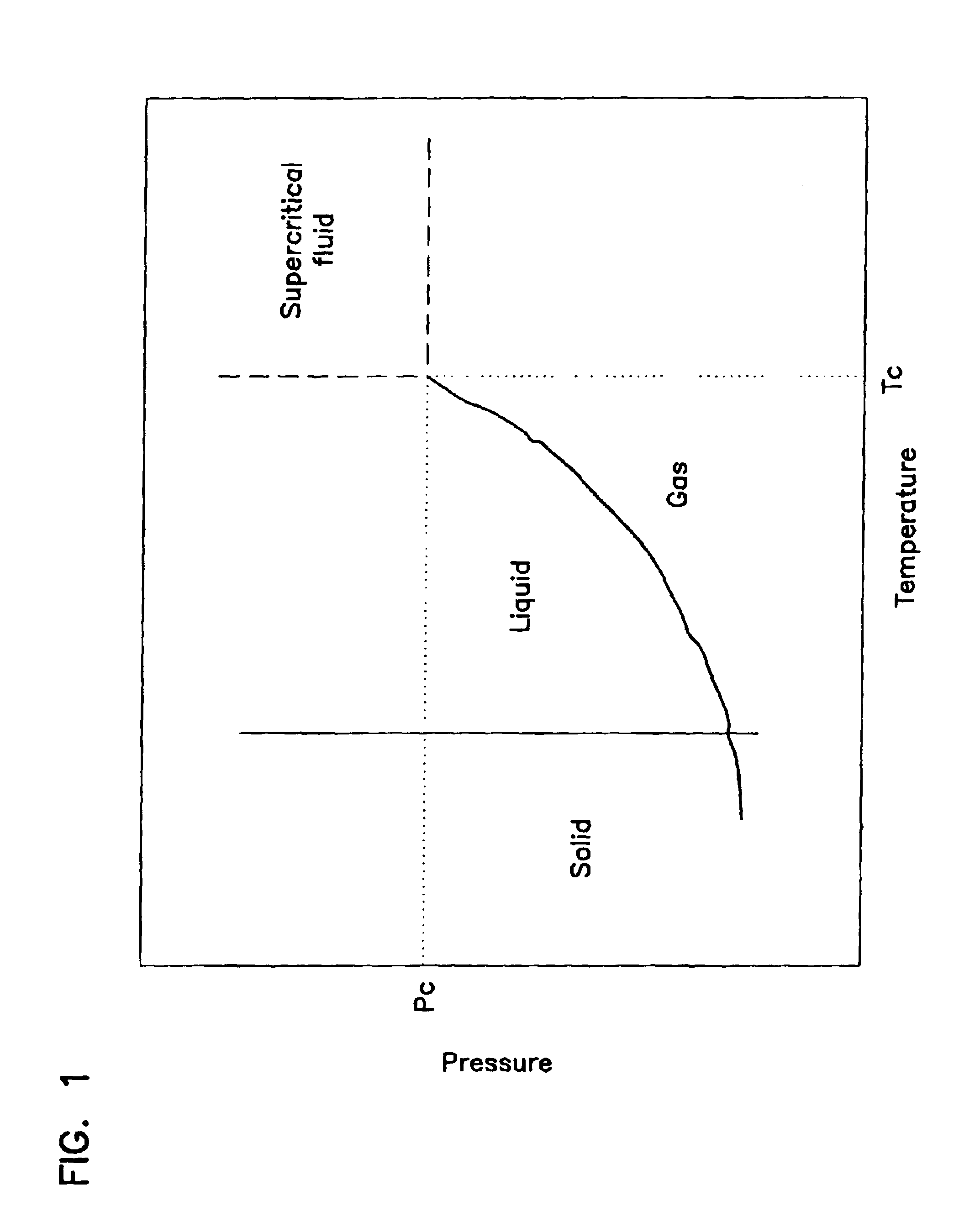Critical fluid antimicrobial compositions and their use and generation
a technology of compositions and antimicrobial agents, applied in the field of antimicrobial compositions, can solve the problems of difficult retention of objects, unfavorable antimicrobial application, and wetness of treated objects
- Summary
- Abstract
- Description
- Claims
- Application Information
AI Technical Summary
Problems solved by technology
Method used
Image
Examples
example 1
In-Situ Peroxycarboxylic Acid Production and Non-Aqueous Delivery of a Peroxycarboxylic Acid Spray
[0178]A system including a densified fluid was employed for generating and delivering an antimicrobial agent.
Materials and Methods
[0179]The experiments were done with an Applied Separations Speed Supercritical Fluid Extraction system. A composition including 10.52 g acetic acid, 12.20 g H2O2, 0.36 g Dequest® and 0.91 g deionized (DI) water was injected into the stainless steel reaction chamber. The CO2 pressure of the system was brought to 350 bar, by adding liquid carbon dioxide to fill the 100 ml reaction vessel. Then, the system was heated to a temperature of 80° C. The system was processed for one hour. Processing included cooling the vessel, venting off the CO2, and measuring the gas-phase concentration of peracid, using a peracid test strip, in the vented CO2.
Results
[0180]The vent gas was tested for the presence of peroxyacetic acid using a peracid test strip from Merck. Within a ...
example 2
Peroxyacetic Acid Concentrations Collected from Vented CO2
[0182]A densified fluid system was employed for generating and delivering a peracid antimicrobial agent.
Materials and Methods
[0183]An in-situ peroxyacetic acid (POAA) preparation was processed in the supercritical fluid extraction system to produce peroxyacetic acid as described in Example 1 with the differences described below. The in-situ peracid composition (8 ml total volume) was processed in the supercritical fluid extraction (SFE) system at a pressure of 200 bar and temperature of 80° C. for one hour. The reaction chamber was periodically agitated manually during the processing. After processing, the gas was slowly vented and bubbled through a small (2.5 ml) glass vial containing 1 ml of DI water in order to collect the peroxyacetic acid. The peroxyacetic acid was collected from the vent gas in this manner for time periods of 30 seconds, two minutes and five minutes. Two sets of collections were done, the first at a ve...
example 3
Preferential Extraction of Peroxyacetic Acid over H2O2 from Reaction Chamber
[0187]The concentrations of peroxy acid and hydrogen peroxide vented from the chamber of densified fluid were measured to determine whether peroxy acid was vented preferentially.
Materials and Methods
[0188]An in-situ peracid composition preparation was processed in the supercritical fluid extraction system to produce peroxyacetic acid and processed as described above in Examples 1 and 2, with the differences described below. After processing, the CO2 gas was slowly vented from the system through a small vial cooled in a dry ice bath to collect the peroxyacetic acid and H2O2 from the vented gas. The collection was done until the reaction chamber was completely vented. The collected, and remaining, solutions were then titrated to determine the concentrations of peroxyacetic acid and H2O2 that had been collected or remained, respectively.
Results
[0189]Table 2 shows the peracid and H2O2 concentrations found in the...
PUM
| Property | Measurement | Unit |
|---|---|---|
| Fraction | aaaaa | aaaaa |
| Fraction | aaaaa | aaaaa |
| Fraction | aaaaa | aaaaa |
Abstract
Description
Claims
Application Information
 Login to View More
Login to View More - R&D
- Intellectual Property
- Life Sciences
- Materials
- Tech Scout
- Unparalleled Data Quality
- Higher Quality Content
- 60% Fewer Hallucinations
Browse by: Latest US Patents, China's latest patents, Technical Efficacy Thesaurus, Application Domain, Technology Topic, Popular Technical Reports.
© 2025 PatSnap. All rights reserved.Legal|Privacy policy|Modern Slavery Act Transparency Statement|Sitemap|About US| Contact US: help@patsnap.com



